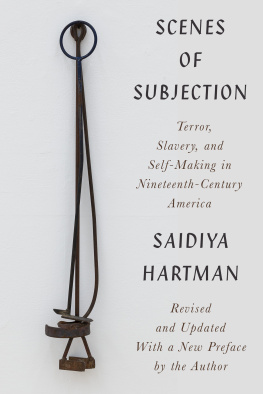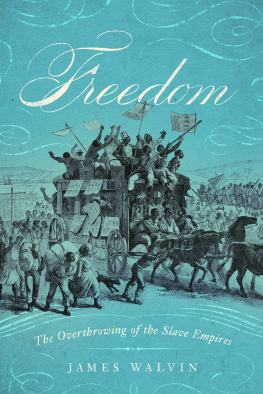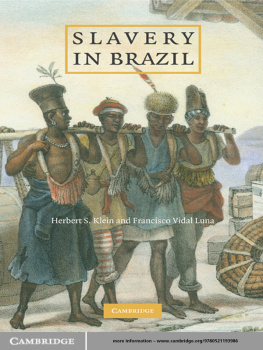Contents
Guide
Page List
SCENES OF
SUBJECTION
Terror,
Slavery, and
Self-Making in
Nineteenth-Century
America
SAIDIYA HARTMAN
Foreword by Keeanga-Yamahtta Taylor
Afterword by Marisa J. Fuentes and Sarah Haley
Notations with Cameron Rowland
Compositions by Torkwase Dyson

For those who made the way
CONTENTS
1Innocent Amusements:
THE STAGE OF SUFFERING
2Redressing the Pained Body:
TOWARD A THEORY OF PRACTICE
5Fashioning Obligation:
INDEBTED SERVITUDE AND THE LEGACY OF SLAVERY
6Instinct and Injury:
THE JUST AND PERFECT INEQUALITY OF THE COLOR LINE
I n the United States, we like to discuss the distortions of the nations history as amnesia, when it is more appropriate to understand our affliction as selective memory clotted with omissions intended to obscure the raw truth about our society. A few years ago, I traveled to New Orleans for a family vacation after a semester of teaching about slavery in the United States. I was anxious to visit the city knowing that by the time the United States ended its role in the transatlantic slave trade, New Orleans had become the center of a robust, internal marketplace for enslaved labor. Today, Americans think of New Orleans as a cultural capital known for its street parties and its Cajun and Creole cuisine, and some may even be familiar with its history of jazz and other Black artistic creations. But there is almost no trace of its vital role in the history of American slavery.
There have been more recent efforts in New Orleans to place a plaque here or there, near areas where tourists traverse, but only to be found by the most adroit. Today, Jackson Square, located in the French Quarter, is at the heart of local tourist attractions and restaurants, but there is hardly any mention or marker of its former function as an open-air marketplace for buying and selling enslaved men, women, and children. There is no public memory of it as the site of the public execution of slaves who participated in an 1811 slave rebellion, the largest in American history. Nor is there any recollection that in its grisly aftermath, the heads of executed slaves were hoisted upon the pikes of the wrought iron gates adorning the park.
New Orleans is hardly unique as a site of selective memory when it comes to the public reckoning with its local history of slavery. From the local to the national, our history of slavery has been recast as part of our narrative of forward progress. Where slavery is depicted as our founding national sin, it is as quickly dispatched as having been exorcized through the carnage of the Civil War, setting the United States upon its essential course toward a more perfect union. Slaverys essential role in building the nations treasure that would, in turn, facilitate its rise as the most powerful nation on earth has been minimized, if not wholly ignored. As have been the roots of slavery to the nations enduring crisis of racism and its attendant impacts within the lives of Black people thereafter.
Saidiya Hartmans powerful exploration of slavery and freedom in the United States, Scenes of Subjection: Terror, Slavery, and Self-Making in Nineteenth-Century America, first appeared in print in 1997, during the last period of spoiled race relations in the twentieth century. Just a few years prior to its publication, the United States had experienced the Los Angeles rebellion, the largest urban insurrection in American history. In response to the uprising, the American state rallied its political forces around crime legislation and a prison-building bonanza. The draconian response provoked the unprecedented outpouring mobilized in the form of the Million Man March, organized by Louis Farrakhan and led by the Nation of Islam. The march was not conceived of as a protest, but became a massive gathering of Black men dejected and marginalized within an increasingly repressive United States. The mounting instability of racial politics in the late 1990s precipitated then-president Bill Clintons poorly conceived conversation on race, to be facilitated by a new commission to study race relations in the United States. Shortly after its formation, that commission produced a dubiously titled report called, the One America Initiative. The remedies that emerged for healing the racial divide in the United States included a heated debate over whether the president should apologize for slavery. In 1998, when Bill Clinton traveled to Africa, the intensifying debate over the apology continued, even as his spokesperson assured the American public, He certainly is going to talk about the legacy of slavery and the scar that it represents on America, but an apology would be, extraneous and off the point. In lieu of an apology, he eventually conceded the painfully obvious: Going back to the time before we were even a nation, European Americans received the fruits of the slave trade, and we were wrong in that.
Twenty-five years later, the United States is embroiled in new turmoil in its latest iteration of a national reckoning about the continuing role of racism in American society. In the summer of 2020, the cumulative weight of the Trump presidencys embrace of white supremacy, coupled with the horrific carnage produced by the unprecedented onslaught of a novel coronavirus chewing its way through Black communities, gave way to unprecedented protests, when an explosive video captured a modern-day lynching of George Floyd at the hands of a white police officer. It provoked the latest national awakening about the continued power of racism within American society, which has returned us to old and unresolved discussions about the role of slavery in American history as a way of understanding the longevity of racism in the United States. This has included a renewed discussion about reparations for African Americans as compensation for a history of unpaid labor. To that end, the only federal legislation to emerge from the rebellions and protests of the summer of 2020 has not been for police reform or in the establishment of new programs intended to improve the life chances of Black people; it has been the establishment of Juneteenth, a new national holiday to commemorate when federal troops arrived in Texas and freed the enslaved.
This kind of national celebration of the symbolic, while leaving undisturbed the architecture of oppression that has made African Americans disproportionately vulnerable to premature death and a travestied freedom, has been a hallmark of the Black experience since the abolition of slavery. This is not to say that the national recognition of the end of slavery is unimportant, but it does serve to reinforce what formally concluded, while paying almost no attention to what carried on after slavery. Instead, the celebrations of the abolition of slavery and the misassumption that it inaugurated Black people into personhood and then citizenship have served to mute other conversations about the ways that one form of bondage gave way to new coercive relationships. This is less about cynicism concerning the immutability of racism or even anti-Blackness than it is an expression of extraordinary pessimism about American liberalism and all of its haughty conceits about its universalism, autonomy, and justice.
Neither a historian nor social scientist, Saidiya Hartman is a scholar of criticism, law, cultural history, and slavery. Scenes was a pioneering achievement of interdisciplinary scholarship just as such work was being called upon to provide differing insights while applying varied methodological applications as a means to invoke different kinds of interventions. Here, Hartmans work breathed new life into scholastic understanding of performance studies, as well as prescient analyses of racial capitalism in cultural studies and criticism. Indeed,









